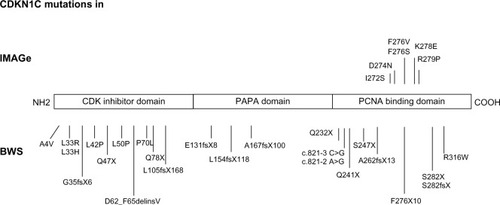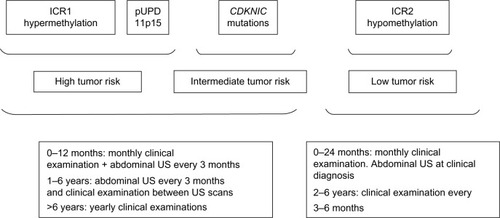Figures & data
Table 1 Molecular heterogeneity of BWS
Figure 1 Mutations of CDKN1C in IMAGe syndrome (upper part) and BWS (lower part). The mutations in IMAGe syndrome are clustered within the PCNA-binding domain and are considered gain-of-function. The pathogenetic variations in BWS are spread throughout the gene and considered loss-of-function. The mutations reported here were previously described by Romanelli et alCitation29 and by Hamajima et al.Citation48

Figure 2 Suggested follow-up for BWS according to risk classes.

Table 2 Mirror phenotypes in BWS and IMAGe syndrome
